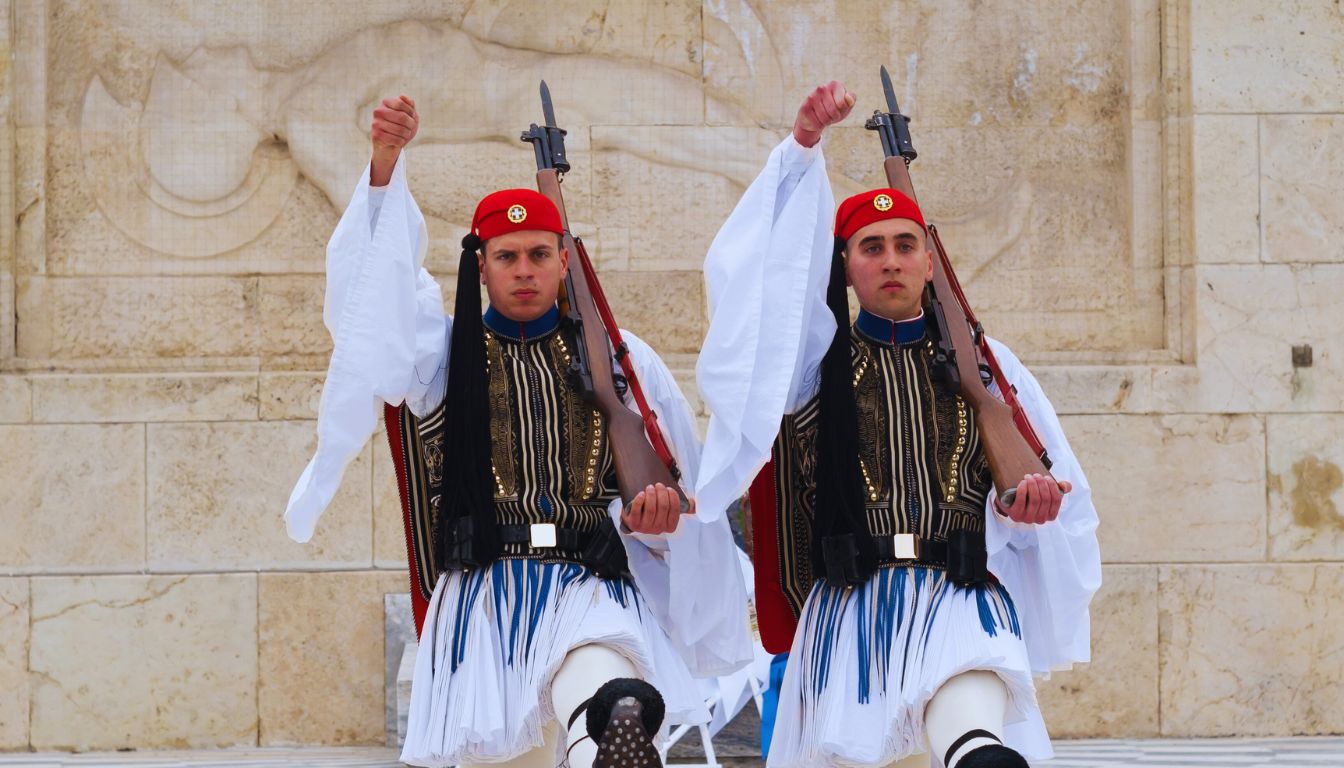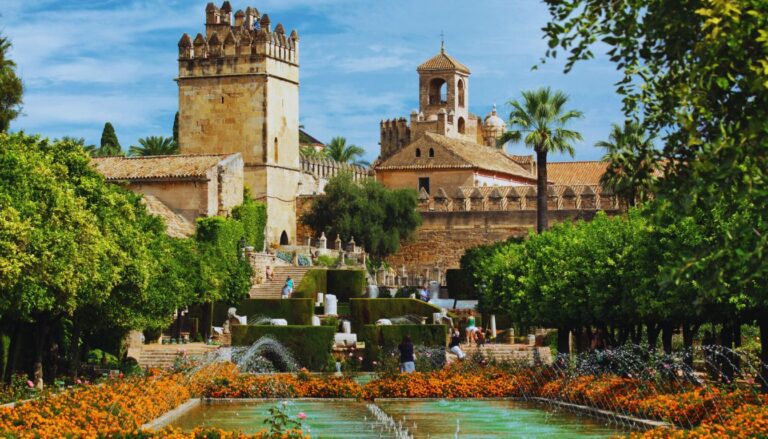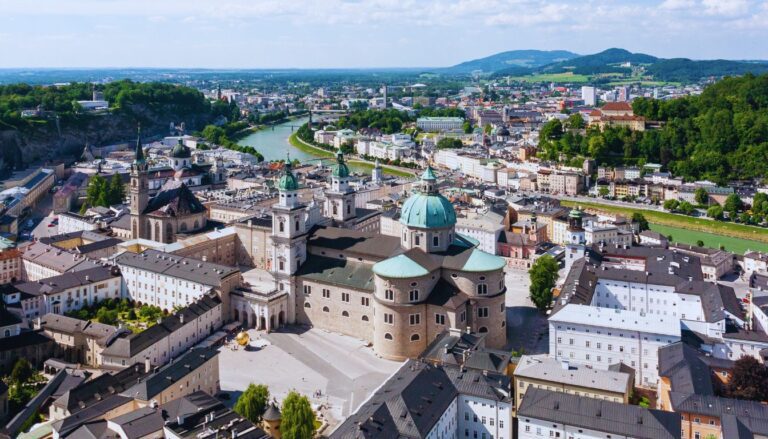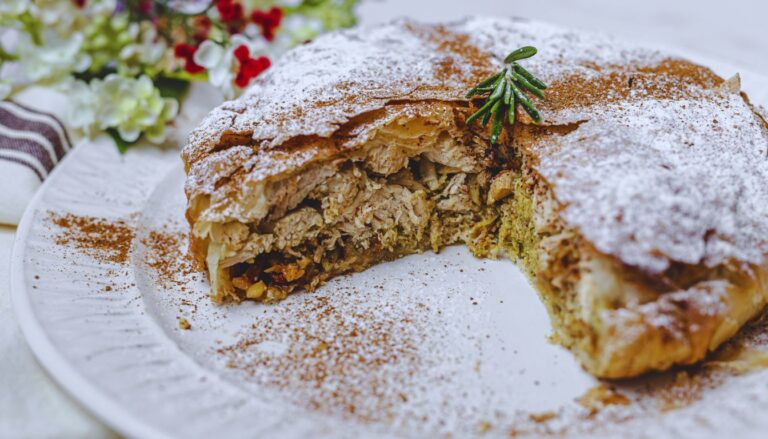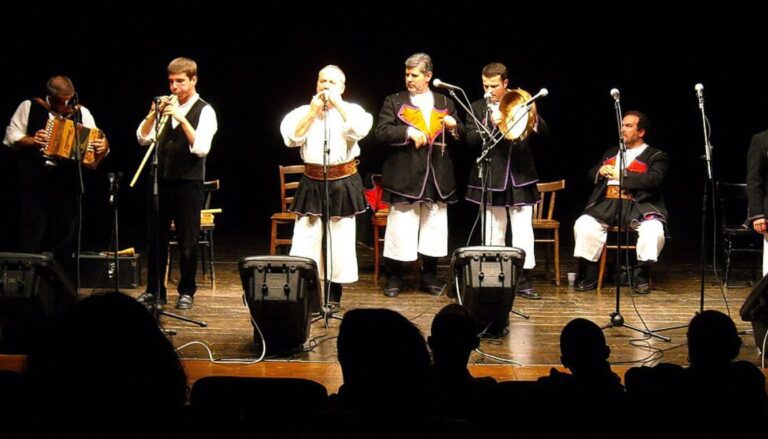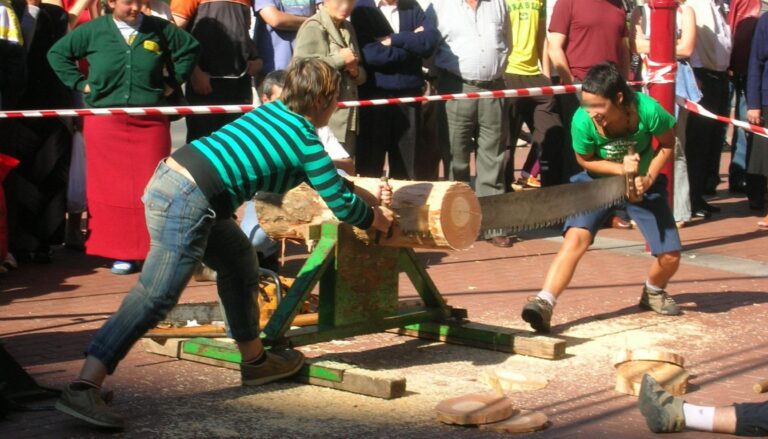Greek traditional costumes are more than just clothing; they are a vibrant expression of Greek history, culture, and regional identity. These garments, with their intricate designs and rich symbolism, tell the story of Greece’s diverse landscapes, its people’s resilience, and the country’s complex history. From the iconic fustanella worn by men to the elegant Amalia dress donned by women, each costume holds within its folds centuries of tradition and cultural significance.
This article delves into the fascinating world of Greek traditional costumes, exploring their origins, regional variations, and the meanings behind their designs. Whether you’re a fashion enthusiast, a student of cultural studies, or simply curious about Greek traditions, this exploration of Greek folk attire offers a unique window into the heart of Greek culture.
Table of Contents
The Evolution of Greek Traditional Costumes
The story of Greek traditional costumes is as old as Greek civilization itself. These garments have evolved over thousands of years, influenced by various factors including climate, occupation, social status, and historical events.
Key periods in the evolution of Greek costumes include:
- Ancient Greece: Clothing was simple, often consisting of draped fabrics like the chiton and himation.
- Byzantine Era: More elaborate styles emerged, with rich fabrics and intricate embroideries influenced by Eastern traditions.
- Ottoman Period: This era saw the introduction of elements like the fustanella and the integration of Turkish influences.
- 19th Century: The Greek War of Independence led to a resurgence of interest in traditional costumes as symbols of national identity.
- Modern Era: While traditional costumes are now mostly worn for special occasions, they continue to influence modern Greek fashion and cultural identity.
Throughout these periods, Greek costumes have reflected the country’s history, from its ancient glory to its struggles for independence and its modern national identity.
The Fustanella: Greece’s Iconic Male Costume
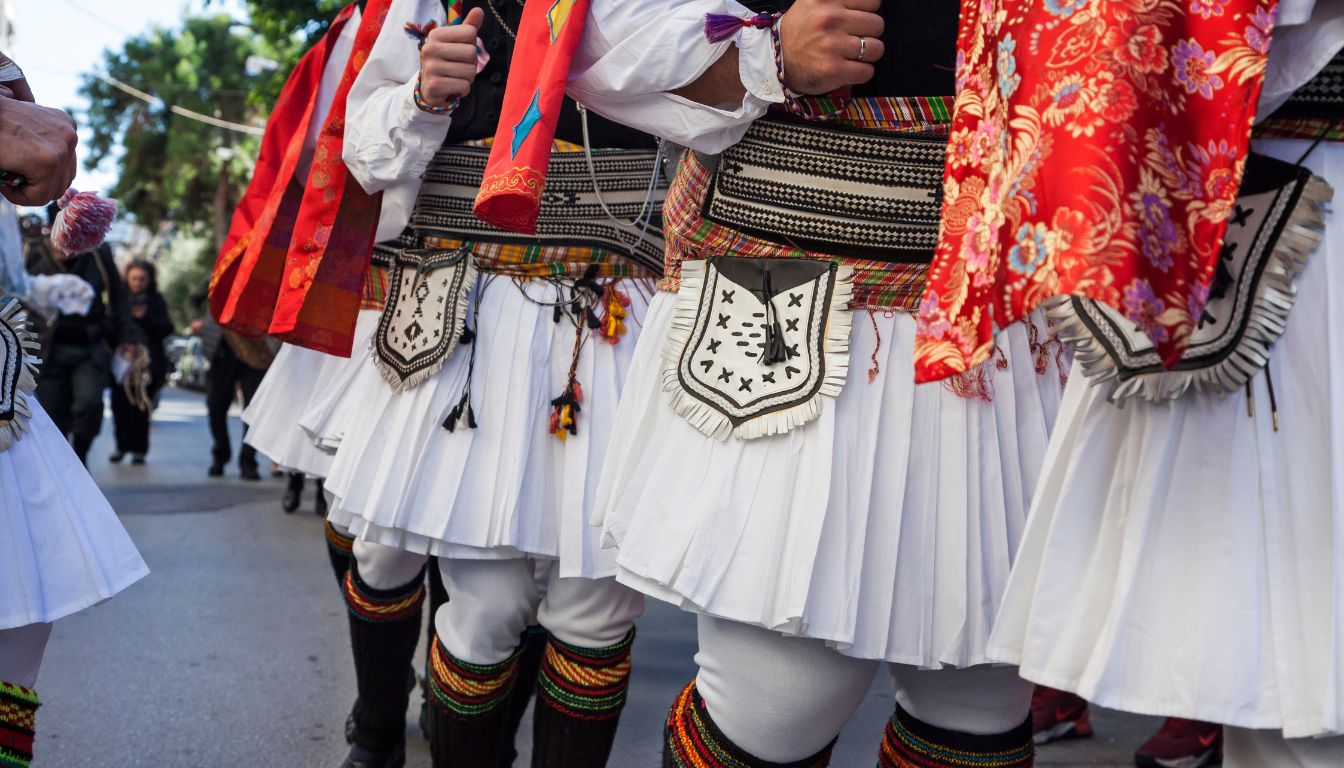
The fustanella is perhaps the most recognizable Greek traditional costume. It’s a knee-length skirt-like garment worn by men, consisting of many layers of stiff, white cloth.
Key features of the fustanella include:
- Pleats: The fustanella typically has 400 pleats, said to represent the years of Ottoman occupation.
- Accompanying garments: It’s often worn with a white shirt, vest, and red cap called a fez.
- Footwear: Special shoes called tsarouhia, with large pompoms on the toes, complete the outfit.
The fustanella gained prominence during the Greek War of Independence in the early 19th century. It became a symbol of Greek nationality and was adopted as the official uniform of the Evzones, the elite light infantry units of the Greek Army.
Today, the fustanella is worn by the Presidential Guard during official ceremonies, serving as a powerful reminder of Greece’s struggle for independence and national identity.
The Amalia Dress: A Symbol of Greek Female Fashion
The Amalia dress, named after Queen Amalia of Greece, is one of the most famous traditional costumes for Greek women. Introduced in the 19th century, it combined elements of traditional Greek dress with Western European styles.
Key elements of the Amalia dress include:
- Kontogouni: A fitted jacket with long, open sleeves.
- Fousta: A skirt made with many meters of fabric, often pleated.
- Apron: An embroidered apron worn over the skirt.
- Fez: A small hat with a golden tassel, similar to the male version but more ornate.
The Amalia dress became popular among urban Greek women and was seen as a symbol of modernization while still maintaining Greek cultural identity. Today, it’s often worn during national celebrations and cultural events.
Regional Variations in Greek Folk Costumes
Greece’s diverse geography and history have led to a wide variety of regional costumes, each with its own unique characteristics and symbolism.
Some notable regional costumes include:
- Crete: Men wear baggy trousers called vraka, while women’s costumes feature elaborately embroidered aprons.
- Peloponnese: Women’s costumes often include the kavadi, a sleeveless woolen coat.
- Karpathos: The island is known for its colorful women’s costumes with intricate embroidery.
- Megara: The bride’s costume in this region is particularly elaborate, with gold coins sewn onto the dress.
- Epirus: Costumes from this region often feature heavy wool garments, reflecting the area’s mountainous terrain.
These regional variations reflect local climates, occupations, and cultural influences, showcasing the rich diversity within Greek culture.
Traditional Greek Headwear
Headwear plays a significant role in Greek traditional costumes, often indicating the wearer’s region, marital status, or social position.
Some common types of traditional Greek headwear include:
- Fez: A red, brimless, felt hat worn by both men and women.
- Sariki: A black head scarf worn by Cretan men.
- Kalpaki: A small, black, cylindrical hat worn in some regions.
- Mandili: A headscarf worn by married women in many regions.
- Pothia: An elaborate headdress worn by brides in some islands.
The style, color, and ornamentation of these headpieces often conveyed important information about the wearer’s identity and status within their community.
The Role of Jewelry in Greek Traditional Costumes
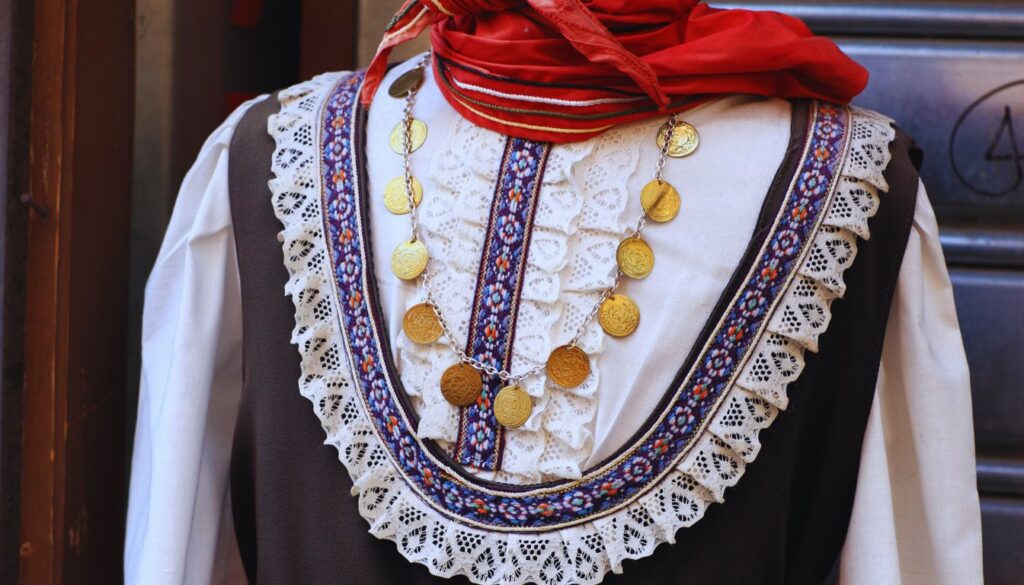
Jewelry is an integral part of Greek traditional costumes, serving both decorative and symbolic purposes. Many pieces of traditional Greek jewelry have specific meanings or functions.
Common elements of Greek traditional jewelry include:
- Coin necklaces: Often part of a bride’s dowry, these also served as a portable form of wealth.
- Crosses: Reflecting the importance of Orthodox Christianity in Greek culture.
- Evil eye charms: Believed to protect against misfortune.
- Fibulae: Decorative pins used to fasten garments.
- Wedding crowns: Ornate crowns worn by bride and groom during Orthodox wedding ceremonies.
The materials, designs, and wearing styles of jewelry often varied by region and social status, adding another layer of cultural significance to Greek traditional costumes.
Colors and Patterns: Symbolism in Greek Attire
The colors and patterns used in Greek traditional costumes are rich with symbolism, often reflecting aspects of Greek history, mythology, and daily life.
Some common colors and their meanings include:
- Blue: Representing the sea and sky, central to Greek life and mythology.
- White: Symbolizing purity and associated with the Greek flag.
- Red: Often used to symbolize life and passion.
- Black: Used in some regions to denote marital status or mourning.
Patterns and motifs also carry significance:
- Meander (Greek key): A common border pattern symbolizing eternity and unity.
- Grapevines: Representing the importance of wine in Greek culture.
- Crosses: Reflecting the influence of Orthodox Christianity.
- Animals: Different animals might represent regional identities or mythological references.
These colors and patterns contribute to the rich visual language of Greek traditional costumes, each element telling a part of Greece’s cultural story.
Greek Traditional Costumes in Modern Times
While traditional costumes are no longer worn in everyday life in Greece, they continue to play an important role in modern Greek culture.
Contemporary uses of Greek traditional costumes include:
- National celebrations: Many Greeks wear traditional costumes for events like Independence Day parades.
- Folk dance performances: Traditional costumes are an essential part of Greek folk dance presentations.
- Weddings: Some couples choose to incorporate elements of traditional costume into their wedding attire.
- Tourism: Traditional costumes are often displayed in museums and used to promote Greek cultural heritage.
- Educational programs: Many schools teach about traditional costumes as part of cultural education.
While the context has changed, Greek traditional costumes remain a powerful symbol of cultural identity and historical continuity.
The Influence of Greek Costumes on Global Fashion
Greek traditional costumes have had a significant influence on global fashion, both historically and in contemporary design.
Some examples of Greek costume influence include:
- Draped styles: The flowing lines of ancient Greek garments have inspired countless fashion designers.
- Ethnic bohemian trends: Elements of Greek folk costume often appear in boho-chic fashion.
- Jewelry design: Greek-inspired jewelry, particularly evil eye motifs, has become popular worldwide.
- Sandal designs: Ancient Greek sandal styles continue to influence footwear fashion.
- Bridal wear: Greek-inspired wedding dresses often feature elements like draped fabrics and ornate headpieces.
This global influence demonstrates the enduring appeal and relevance of Greek costume traditions in the world of fashion.
Preserving Greek Costume Traditions
Efforts to preserve Greek costume traditions are ongoing, involving various institutions and community initiatives.
Key aspects of preservation efforts include:
- Museum collections: Many museums in Greece and around the world maintain collections of Greek traditional costumes.
- Cultural organizations: Groups dedicated to preserving Greek heritage often focus on traditional costumes.
- Artisan training: Programs to train new generations in traditional costume-making techniques.
- Digital archives: Creation of online databases documenting different regional costumes.
- Cultural events: Festivals and exhibitions showcasing traditional costumes help keep these traditions alive.
These efforts ensure that the rich heritage of Greek traditional costumes continues to be appreciated and understood by future generations.
Conclusion
Greek traditional costumes represent a vibrant tapestry of history, culture, and artistry. From the warrior-like fustanella to the elegant Amalia dress, from the intricate embroideries of island costumes to the practical warmth of mountain attire, these garments tell the story of Greece’s diverse regions and complex history.
More than just clothing, Greek traditional costumes are a form of cultural expression. They reflect the values, beliefs, and experiences of the Greek people through the ages. The colors, patterns, and styles of these costumes speak of Greece’s connection to the sea, its Orthodox Christian heritage, its periods of occupation and independence, and the unique character of its many regions.
While these costumes are no longer part of everyday wear, their significance in Greek culture remains strong. They continue to play a vital role in national celebrations, cultural performances, and as a source of inspiration for contemporary fashion. The ongoing efforts to preserve and promote these costume traditions ensure that this important aspect of Greek heritage will continue to be appreciated and understood.
For anyone interested in cultural studies, fashion history, or simply in understanding the rich tapestry of Greek tradition, the study of Greek traditional costumes offers invaluable insights. These garments, with their intricate designs and profound symbolism, serve as a tangible link to Greece’s past and a colorful expression of its enduring cultural identity.
As Greece continues to evolve in the modern world, its traditional costumes stand as a powerful reminder of the country’s unique heritage and the enduring strength of its cultural traditions.

